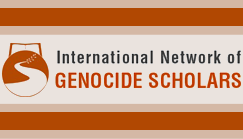Event Title
Submission Type
Video
Abstract
Historians now agree on the fact that approximatively 700 000 soviet citizens were murdered during the period of the great purges in the second half of the 1930ies. The study of soviet archives reveals however paradoxical findings. Hyper bureaucratical documentation of the whole extra-judicial procedures (from arrest, to imprisonment, interrogation and trial) indeed stops at the moment of the death sentence execution. Although precise information is always available about when, how and by whom each of the 700 000 victims has been executed, no information is never available about the location of the victim’s burial that has thus remained clandestine for decades. This archival silencing of the dead-bodies’ treatment bears a long-lasting legacy. The soviet secret State policy of dead-bodies concealment combined with further post-soviet State policy of disinterest if not denialism of the crimes committed under the Stalinist regime, has indeed led to a very limited number of exhumations of the great purges victims. Moreover, when a mass grave related to this period is found and opened, human remains are always reburied anonymously as it is virtually impossible to carry out any identification procedure. Focusing on the study of a series of mass graves opening undertaken since the end of the 1990ies at a local level in the Voronej region, this paper aims at enlightening the sustainable social effects of clandestine massive extra-judicial executions, and questioning the great purges victim’s identity erasure at a more global level.
Biographies
Original PPT with Video

Collective anonymous reburials of great terror victims in Russia: about mass death and identity erasure
Historians now agree on the fact that approximatively 700 000 soviet citizens were murdered during the period of the great purges in the second half of the 1930ies. The study of soviet archives reveals however paradoxical findings. Hyper bureaucratical documentation of the whole extra-judicial procedures (from arrest, to imprisonment, interrogation and trial) indeed stops at the moment of the death sentence execution. Although precise information is always available about when, how and by whom each of the 700 000 victims has been executed, no information is never available about the location of the victim’s burial that has thus remained clandestine for decades. This archival silencing of the dead-bodies’ treatment bears a long-lasting legacy. The soviet secret State policy of dead-bodies concealment combined with further post-soviet State policy of disinterest if not denialism of the crimes committed under the Stalinist regime, has indeed led to a very limited number of exhumations of the great purges victims. Moreover, when a mass grave related to this period is found and opened, human remains are always reburied anonymously as it is virtually impossible to carry out any identification procedure. Focusing on the study of a series of mass graves opening undertaken since the end of the 1990ies at a local level in the Voronej region, this paper aims at enlightening the sustainable social effects of clandestine massive extra-judicial executions, and questioning the great purges victim’s identity erasure at a more global level.





Comments
View the agenda item.
Note: The main download item (blue button, upper right) is a compressed PDF of the PowerPoint and does not contain the video notes. For the full PowerPoint, including video, use the download link directly below under Additional Files.